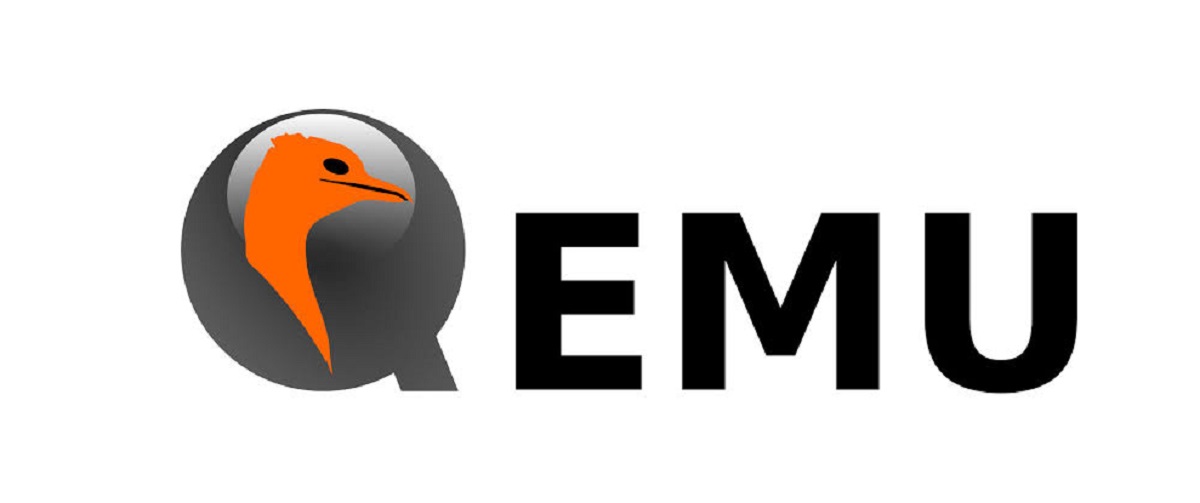
QEMU is a processor emulator based on dynamic binary translation
La new version of Qemu 8.2 It has already been released and comes with a variety of important changes for both emulators, as well as the addition of new support.
For those who are unaware of QEMU, they should know that it isallows you to run a program created for a hardware platform on a system with ato completely different architecture, for example, running an ARM application on an x86-compatible PC.
In virtualization mode in QEMU, the performance of code execution in an isolated environment is similar to that of a hardware system due to the direct execution of instructions on the CPU and the use of the Xen hypervisor or KVM module.
Main novelties of QEMU 8.2
In this new version that is presented of Qemu 8.2, the Support for new devices:
- Virtio-sound allows emulating a sound card to record and play sound on the guest system using an audio backend (CONFIG_SND_VIRTIO option must be enabled for the guest).
- Hv-balloon allows returning unused memory pages to the host system during operation and requesting additional pages in case of memory shortage (it does this with the help of the implementation of the dynamic memory protocol for Hyper-V), the new device can be considered as an alternative to virtio-balloon for Windows guest systems, using a backend that supports the dynamic memory protocol on the host side.
- A universal flash storage device to emulate a flash drive
In addition to this, it also highlights the addition of a virtual graphical interface «kohlrabi» qIt is reminiscent of the previously available VirGL and also allows using a virtual GPU on the guest system for 3D rendering.
Regarding the improvements in the emulators, Qemu 8.2 will add on x86, by emulating a KVM-based Xen hypervisor environment, support for PV console and network devices, as well as simplified commands for block and network devices. The classic TCG code generator now supports SHA instructions.
En ARM implements Cortex-A710 and Neoverse-N2 CPU emulation, as well as support for processor extensions PACQARMA3, EPAC, Pauth2, FPAC, FPACCOMBINE, TIDCP1, MOPS, HBC and HPMN0 and it also now has support for the simulation of CFU/CFI and TRNG devices for the Xilinx Versal board.
In the case of the RISC-V emulator, Qemu 8.2 implements a set of vector cryptographic instructions, along with support for virtual IRQs and IRQ filtering, in addition to stabilized support for Zicond extensions.
On the other hand in VFIO adds support for P2P migration mode and implements the ability to dynamically distribute MSI-X, preparations have been made for the transition to the new IOMMUFD backend.
Virtio-mem implements a "dynamic-memslots=on" mode to dynamically allocate multiple memory slots instead of statically allocating one large slot. Using this mode allows you to reduce memory consumption on large virtio-mem devices that allocate a small amount of memory to the VM.
Of the other changes that stand out of this new version:
- The dump-guest-memory command now supports output in the standard kdump format.
- Added support for UFS emulation using the new ufs and ufs-lu devices.
- The HPPA Architecture Emulator provides emulation of a 2.0-bit PA-RISC 64 CPU and emulation of the C3700 system, including the Astro memory controller and Elroy PCI bridges.
- Added support for AIA (Advanced Interrupt Architecture) virtualization extensions via KVM.
- The LoongArch architecture emulator implements the emulation of the Loongson LA132 CPU. Added support for the LASX instruction set extension and the PRELDX instruction.
- The s390x architecture emulator has added support for vfio-ap to forward the cryptographic adapter to protected guest systems.
- The Tricore emulator has added support for TC37x (ISA 1.6.2) processors and CRCN, FTOU, FTOHP, HPTOF instructions.
- The NBD driver implements support for a protocol extension that uses 64-bit offsets when handling large data to improve performance.
Finally if you are interested in knowing more about it of the changes and novelties that are presented in this new version of QEMU 8.2 you can consult the details and more in the following link.